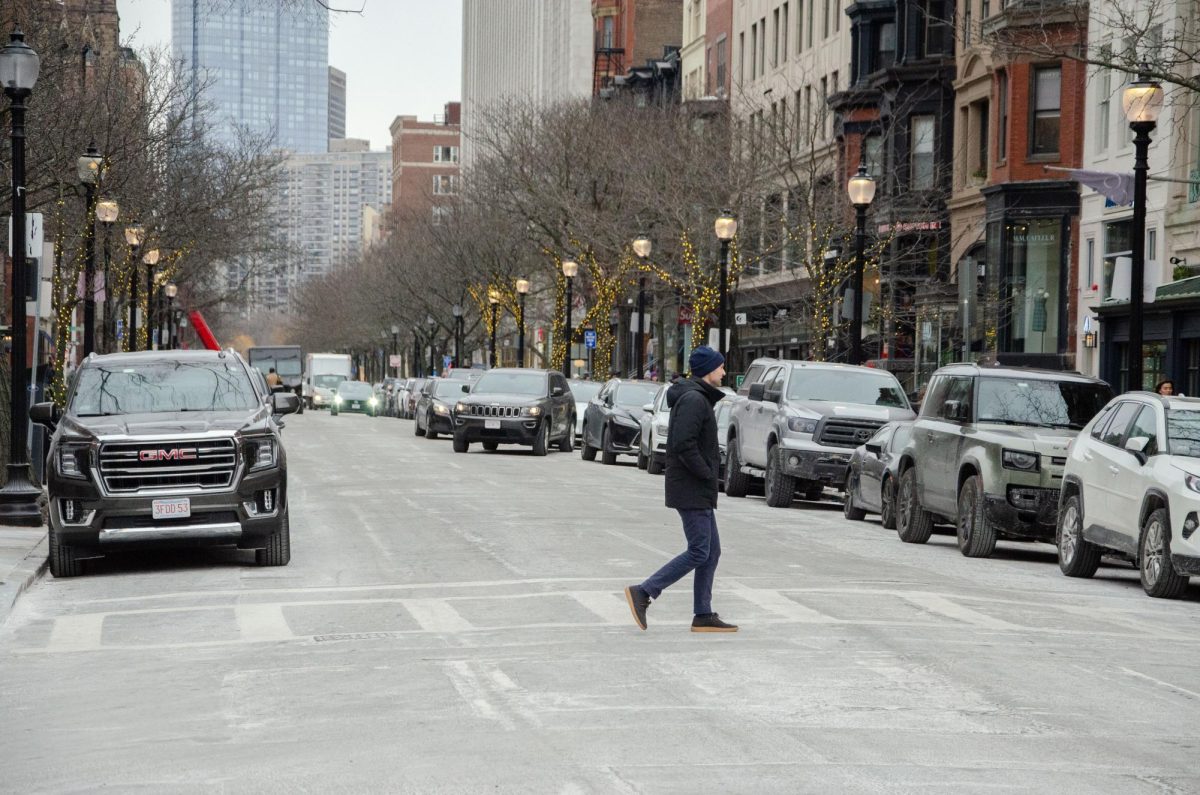Oftentimes, when people think about the City of Boston, they imagine the downtown area. They think about the ocean, about lobster rolls and oysters. An image is conjured of brown bricks, small shops and an abundance of restaurants. Many non-Bostonians think that Boston is full of people with high incomes and comfortable lives. This assumption is verified when tourists—or even transplants—visit or move to areas like Newbury Street. However, Newbury Street and the surrounding areas are not entirely representative of Boston. This bustling street attracts many people, but its ambiance and amenities are foreign to those who don’t live there. Newbury Street is a curious example of wealth inequality—an illusion of what Boston is understood to be.
At the “beginning” of the street, there are shops that cater to the average person, albeit a bit pricier. T.J. Maxx, Uniqlo and Newbury Comics progress into Nike, Zara and CVS. Just a few blocks further, Newbury Street not only becomes quieter, but even more pricey. Toward the end of Newbury Street, near the Boston Public Garden, there are designer stores such as Gucci, Cartier and Chanel. Luxury apartments and storefronts are flanked by private security. For some of us who grew up in Boston, that area feels unfamiliar and even inaccessible. Even the demographics change, skewing whiter and richer—a far cry from other neighborhoods such as Roxbury and Mattapan.
Back Bay, the neighborhood where Newbury Street is found, is one of the wealthiest areas in Boston. According to the 2022 United States Census, the median income of Back Bay was $131,648 (1). Nearby, the median income of the South End, which has become a desirable neighborhood, is $74,155 (2), which is closer to the national average of $74,580 (3). These numbers are staggeringly high compared to Roxbury, which has a median income of $42,411 (4). Sociologists and economic researchers have made connections between the demographics of specific neighborhoods with their median income. As reported by WBUR, 71 percent of residents are white in Boston’s Back Bay (5), while Roxbury’s population is far more diverse, with 46 percent of its residents identifying as Black and 29 percent as Hispanic (6). This wealth gap can be attributed to a variety of reasons, such as the effects of institutional racism like redlining, the underfunding of public schools and a lack of access to well-paying jobs (7). This is not surprising, as Boston in particular has a long and fraught history of racism against minority groups. Therefore, Boston is not particularly known for its racial diversity. This isn’t to say that there is not a substantial population of people of color, but when the most famous areas are less than diverse, that preconceived notion is affirmed.
Newbury Street and Back Bay are almost a different world. While visiting Newbury Street, it isn’t hard to notice the influx of tourists, transplants and college students. This reality is to be expected, as it is a popular area with lots to see, but it does raise an interesting question. How many people who live on or around Newbury Street are native Bostonians? If they are, does this matter? Perspectives on this inquiry vary from those who think the influx of people moving to Boston enrich the city juxtaposed with those who believe that this trend has a more negative than positive impact.
In the case of Back Bay, the issue of gentrification is not quite as prevalent as it is in other parts of Boston. This is because Back Bay has historically been a wealthy neighborhood, and clearly, little has changed over the years. Bostonians who don’t reside in the Back Bay area but might spend time there working or shopping can see the stark differences from their personal reality. So, the effects of increased relocation may not be as impactful as they would be in historically poorer areas. However, Newbury Street and Back Bay are a part of Boston and should be just as accessible to those who don’t live there.
Boston is small, and Back Bay is just a fraction of what the city has to offer. Visitors or non-native Bostonians should try to visit and immerse themselves in the rich cultures of other neighborhoods. It is essential to see more than what is famous and insular, because it renders the rest of Boston invisible. Those of us who grew up here should not feel like strangers in our own city. We belong in every nook and cranny of our home; we deserve to enjoy all of what Boston has to offer.
Sources:
(1) https://data.census.gov/profile/ZCTA5_02116?g=860XX00US02116
(2) https://data.census.gov/profile/ZCTA5_02118?g=860XX00US02118
(3) https://www.census.gov/library/publications/2023/demo/p60-279.html
(4) https://data.census.gov/profile/ZCTA5_02121?g=860XX00US02121
(5) https://www.wbur.org/news/2023/09/01/back-bay-boston-massachusetts-locals-field-guide
(6) https://www.wbur.org/news/2023/09/01/roxbury-boston-massachusetts-locals-field-guide
(7) https://www.americanprogress.org/article/systematic-inequality/





















































